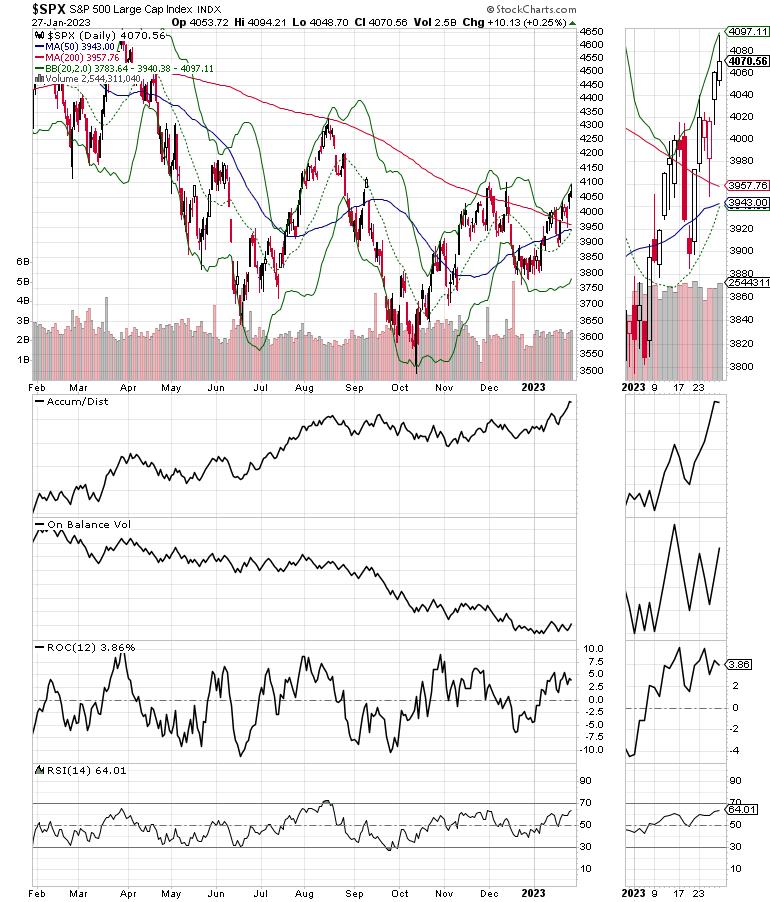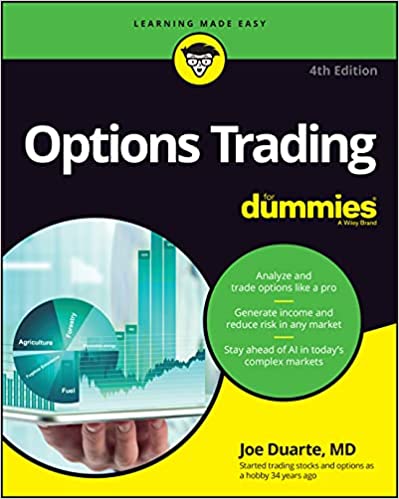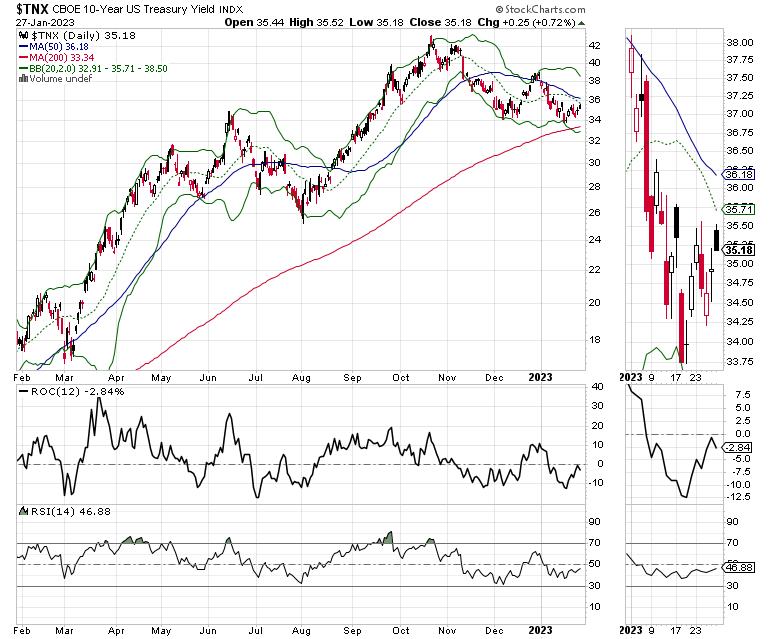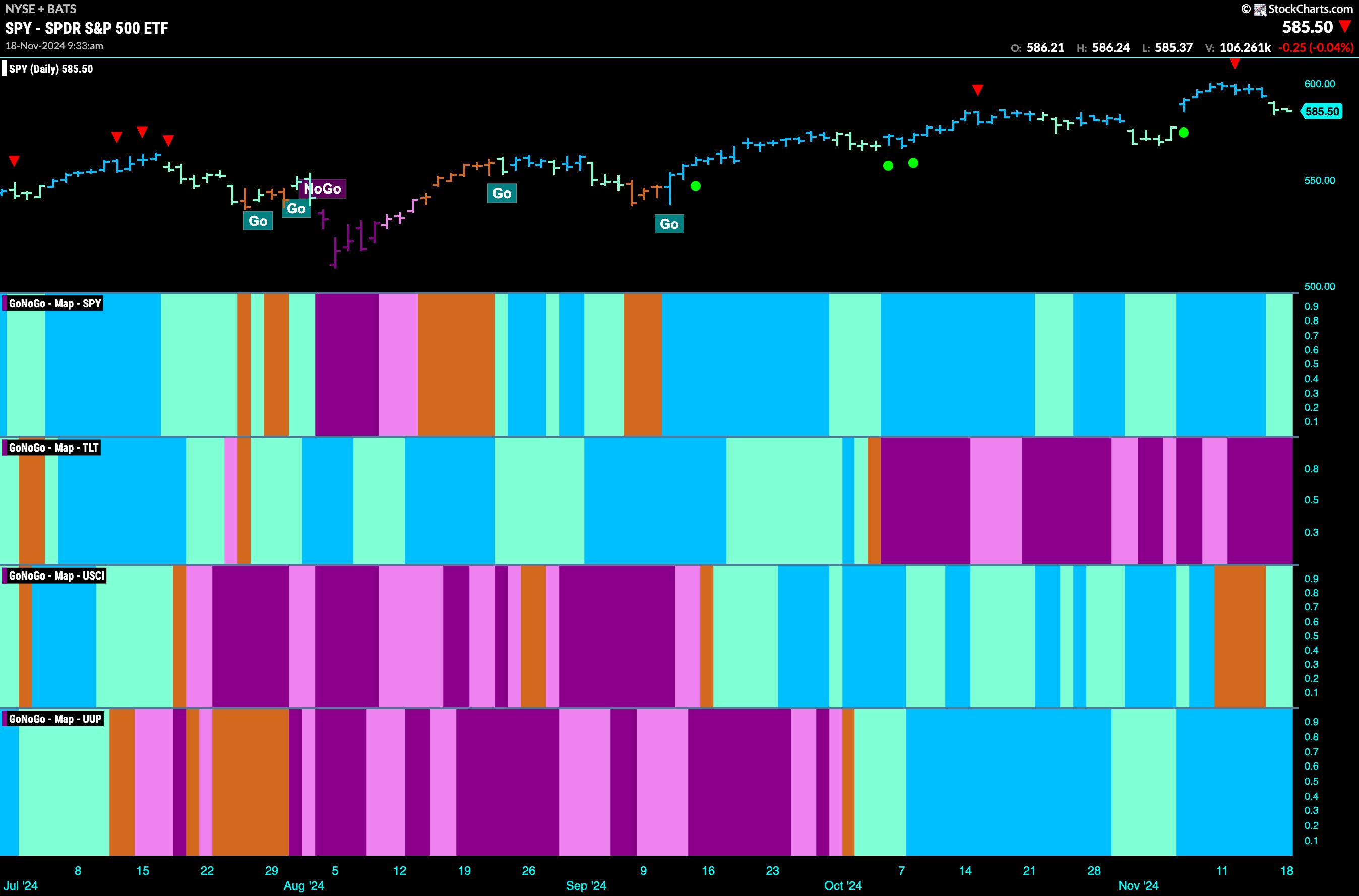The Bears have missed a barn fire rally in recent weeks. Now many change their stripes and “hold their noses” when buying into the rally late. This is a great time to gauge what’s likely to happen next.
I have been bullish on this market for some time and remain so. But after the S&P 500 (SPX) is up 15% since the October 2022 bottom, I now expect stock prices to consolidate. However, given the momentum and aggressive dip buying that has been evident of late, unless the Fed derails the rally with bearish talk and bearish action, we may not see a slowdown until mid-February.
Given the number of bears that missed the rally, the overall technical improvement in the market should lead to further buying in the near term. But a lot depends on the Fed. Here are several reasons for the consolidation when it finally arrives:
- Market is overbought (RSI on SPX fluctuates near 70);
- The upcoming Federal Reserve meeting has the potential to kill; and
- Bullish periods in January tend to be followed by sluggish trading in February and March.
What happens next has to do with how inflation moderates and what the Fed says and does in response over the next few months, starting with its upcoming Feb. 1 FOMC meeting, which will see an increase in the fed funds rate by 25 basis points is expected. Also, if the Fed says it will pause to see if it needs to do more, we could see one final push higher in stocks. On the other hand, stronger comments from Chairman Powell could send the market into profit-taking mode.
Regardless of what the Fed says, however, any further data suggesting inflation is slowing will likely put a bottom under stocks. Hopefully that bottom will be above the major 200-day moving averages, as I’ll explain in more detail below.
The latest data is that of the Fed PCE deflator (Personal Consumption and Expenses) was positive for stocks on 1/27/23 as they were up just 4.4% per year, a nice slowdown in their pace of gains. Unfortunately, it’s still well above the Fed’s stated inflation target of 2%.
Bond yields are still hovering around 3.5% while mortgage rates have fallen a little further, with the average 30-year mortgage coming in at 6.13%. These lower market rates signal a slowdown in the economy, which is bullish for stocks for now as long as the slowdown doesn’t deepen and the job market doesn’t fall apart despite any proposed layoffs.

Lower mortgage rates may have entered another bullish move a floor under the housing market. In my corner of the woods, I’m seeing new homes popping up again, while houses that haven’t seen potential buyers are starting to get traffic.

Still, both bond yields and mortgage rates have slowed their rate of decline as investors pause ahead of the upcoming rate decision and Fed comments. For its part, the SPDR Homebuilders ETF (XHB) continues its momentum, which is confirmed by a steady increase in Accumulation Distribution (ADI) and On Balance Volume (OBV). This is as bullish as it gets, as rising ADI means short sellers have given up and rising OBV means buyers are stepping in. A move above $68 would likely trigger higher prices.
ETFs are great ways to invest in market sectors. But individual stocks often deliver more pop for the buck. In my subscriber portfolios, I have several real estate stocks that outperform XHB. You can try them with a free trial here.
bullish Evolution: NDX breaks 200-day moving average despite Intel miss
The Nasdaq 100 Index (NDX) did the unthinkable last week, moving slightly above its 200-day moving average and the 12,000 area, despite a major miss at former high-tech icon Intel (INTC). This is a clear sign that the uptrend in stocks, while in need of a break, is actually gaining momentum.

For its part, the New York Stock Exchange (NYAD) advance-decline line remained very stable in a rising trend above its 50-day and 200-day moving averages on 1/6/23. The stock market is thus in an increasingly solid upward trend.

Meanwhile, the CBOE Volatility Index (VIX) continues to make fresh lows, which is also bullish. When the VIX rises, stocks tend to fall as rising put volume is a sign that market makers are selling stock index futures to hedge their put sales to the public. A decline in the VIX is bullish as it means fewer put option purchases and eventually leads to call purchases, prompting market makers to hedge by buying stock index futures, increasing the chances of higher stock prices.
Get all the details on why my favorite indicator, the NYAD, is bullish in the market here.
Liquidity remains flat, which is better than falling as the Eurodollar Index (XED) has been trending sideways to slightly higher for the past few weeks. Note that the market’s recent rally off the October bottom corresponded to this flattening out in liquidity.

The S&P 500 (SPX) is poised to break above the 4100, having now moved fairly decisively above its 20-, 50- and 200-day moving averages. At the same time, Accumulation/Distribution (ADI) has remained stable and On Balance Volume (OBV) has bottomed while attempting to turn up. That means stocks are now being bought net, albeit in spurts.

The Nasdaq 100 Index (NDX) has made a pretty concrete triple bottom, although it continues to lag SPX. It is still possible that it has formed a triple bottom, with the 10,500-10,700 price range providing brief coverage. The index is now above 11,000 while the real test is what will happen around 12,000 and the 200-day moving average.
For the most up-to-date information on options trading, visit here Options trading for dummies, now in its 4th edition – Get your copy now! Now also available as an Audible audiobook!
 #1 New Release in Options Trading!
#1 New Release in Options Trading!
Good news! I created my NYAD complexity chaos diagram (on my YD5 Videos) and a few other favorites public. You can find them here.
Joe Duarte
In the money options
Joe Duarte is a former money manager, an active trader and a widely recognized independent stock market analyst since 1987. He is the author of eight investment books, including the bestseller Trading options for dummiesrated a TOP option book for 2018 from Benzinga.com and now in its third edition, plus The book “Invest everything in the 20s and 30s”. and six other trading books.
The book “Invest everything in the 20s and 30s”. is available at Amazon and Barnes and Noble. It was also recommended as Washington Post Color of Money Book of the Month.
For Joe’s exclusive stock, options and ETF recommendations, visit your mailbox each week https://joeduarteinthemoneyoptions.com/secure/order_email.asp.

Joe Duarte is a former money manager, active trader and widely respected independent stock market analyst dating back to 1987. His books include Best Selling Trading Options for Dummies, A TOP Options Book for 2018, 2019 and 2020 from Benzinga.com, Trading Review.Net 2020 and Market Timing for Dummies. His latest bestseller, The Everything Investing Guide in your 20s & 30s, was named Color of Money Book of the Month by The Washington Post. To have Joe’s exclusive stock, options and ETF recommendations delivered to your inbox each week, visit the Joe Duarte In The Money Options website.
learn more





